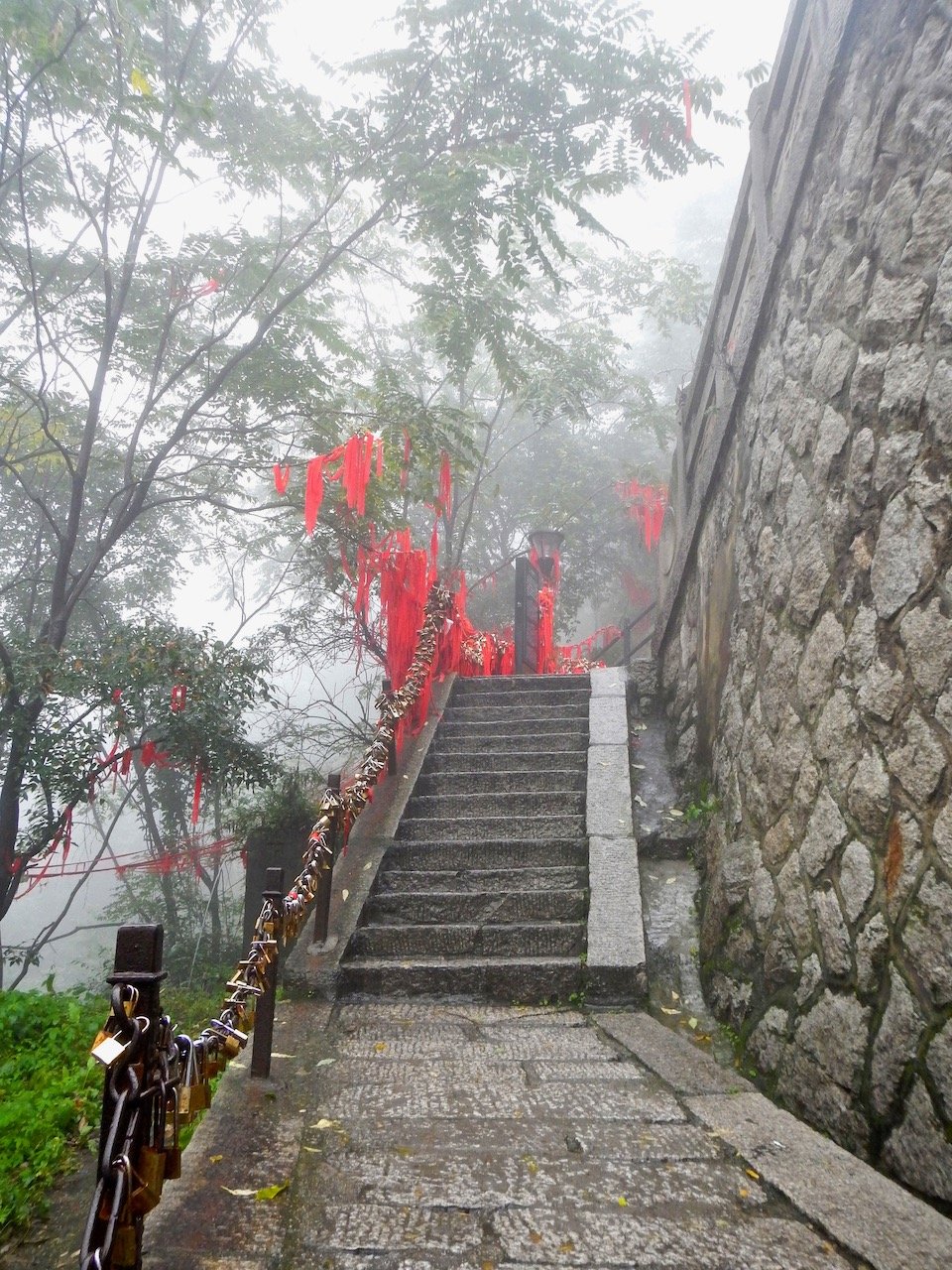Here is why you must visit Xi’an, China
(Some links in this post are affiliate links. If you click through and take action, I'll be compensated.) If you are also interested in any PRINTS from any of my posts, be sure to check out my store where you can buy prints as posters, in metal/wooden frames or on canvas.
The next logical stop is the ancient chinese capital city of Xi’an. To save time and money (on accomodation), take the night train from Shanghai Railway Station and choose between a seat or a sleeper car. The trip takes anywhere from between 11 and 14 hours, depending on the train you take. You can find a Google map of the places I will discuss at the end of this post.
Xi’an may not have the name recognition of Beijing (see blog post) or Shanghai (see blog post), but this old chinese capital bears great significance as the start of the Silk Road and is the home of the terracotta warriors.
The Xi’an city wall is the most obvious landmark upon arriving and is a product of the Ming and Qing dynasties. Built as a fortification, the entire structure is in consdieration for being branded a UNESCO WHS. The entire wall is 14 kilometers in length and features towers, drawbridges, a moat, and parapets. More information about the walls can be found here.
No visit to Xi’an is adequate without seeing the Qin Shi Huang Mausoleum and the Museum of Qin Terracotta Warriors and Horses. With him, are buried thousands of life sized terracotta warriors, horses, and chariots. The tomb is composed of a variety of pits, featuring columns with scores of the warriors (archers, musicians, other officials). The figures in the best of conditions were removed and are housed behind glass in the lobby of the site, some of which still have their original color scheme.
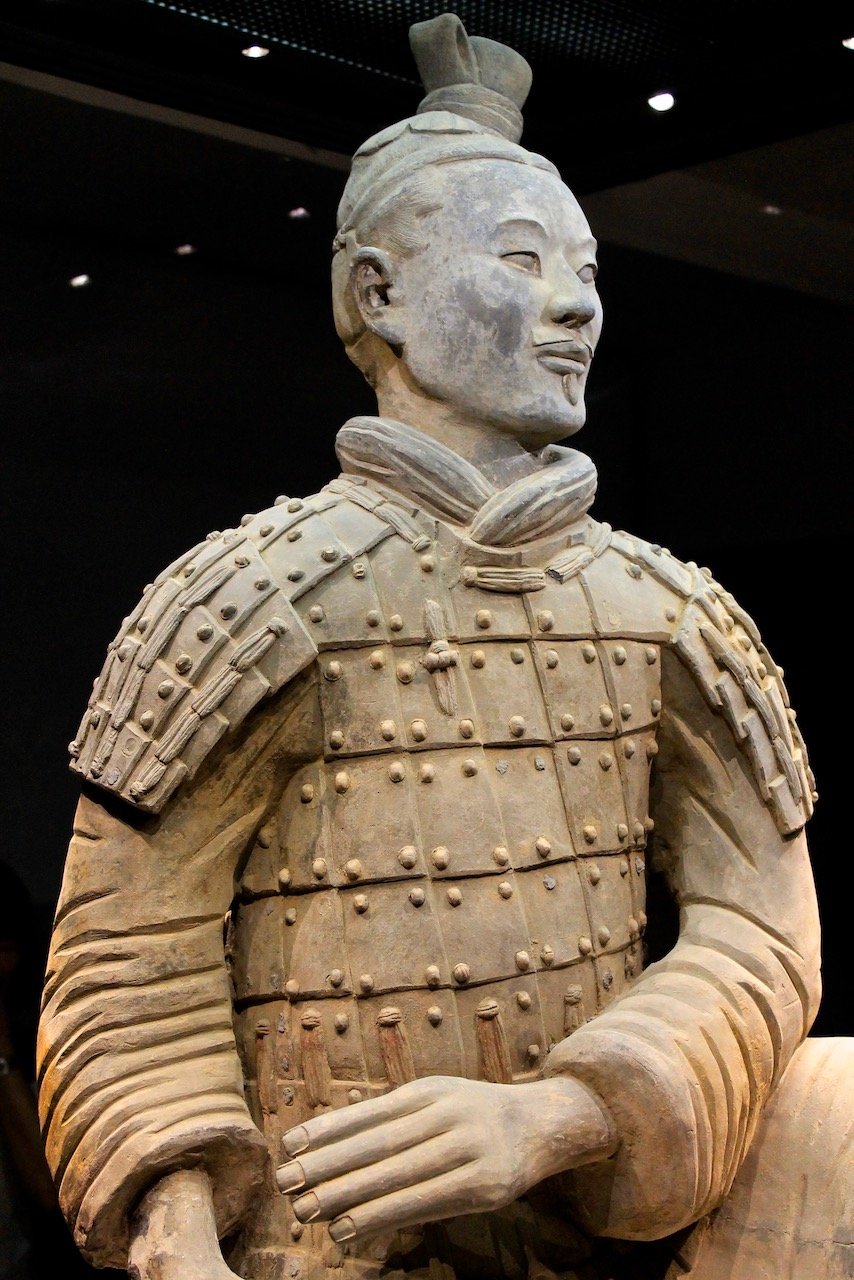
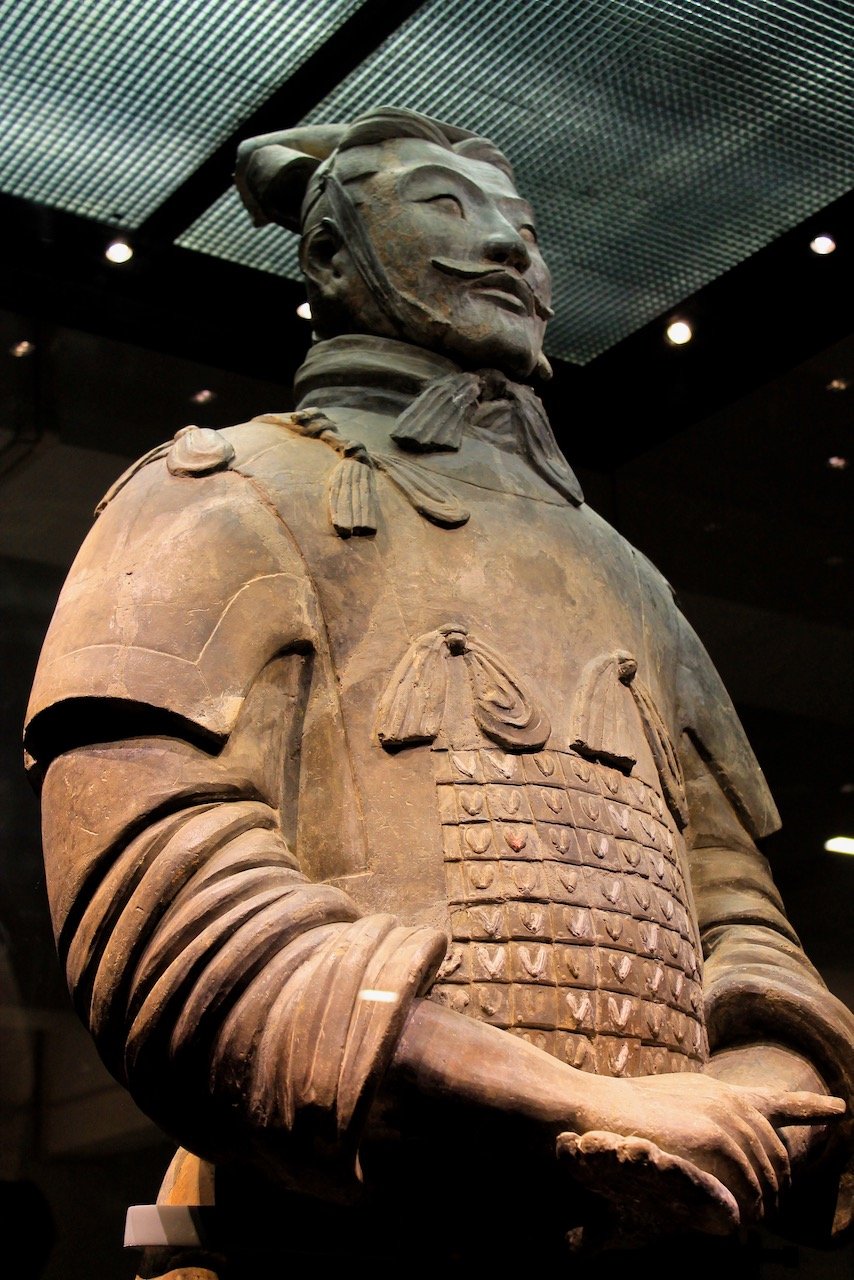
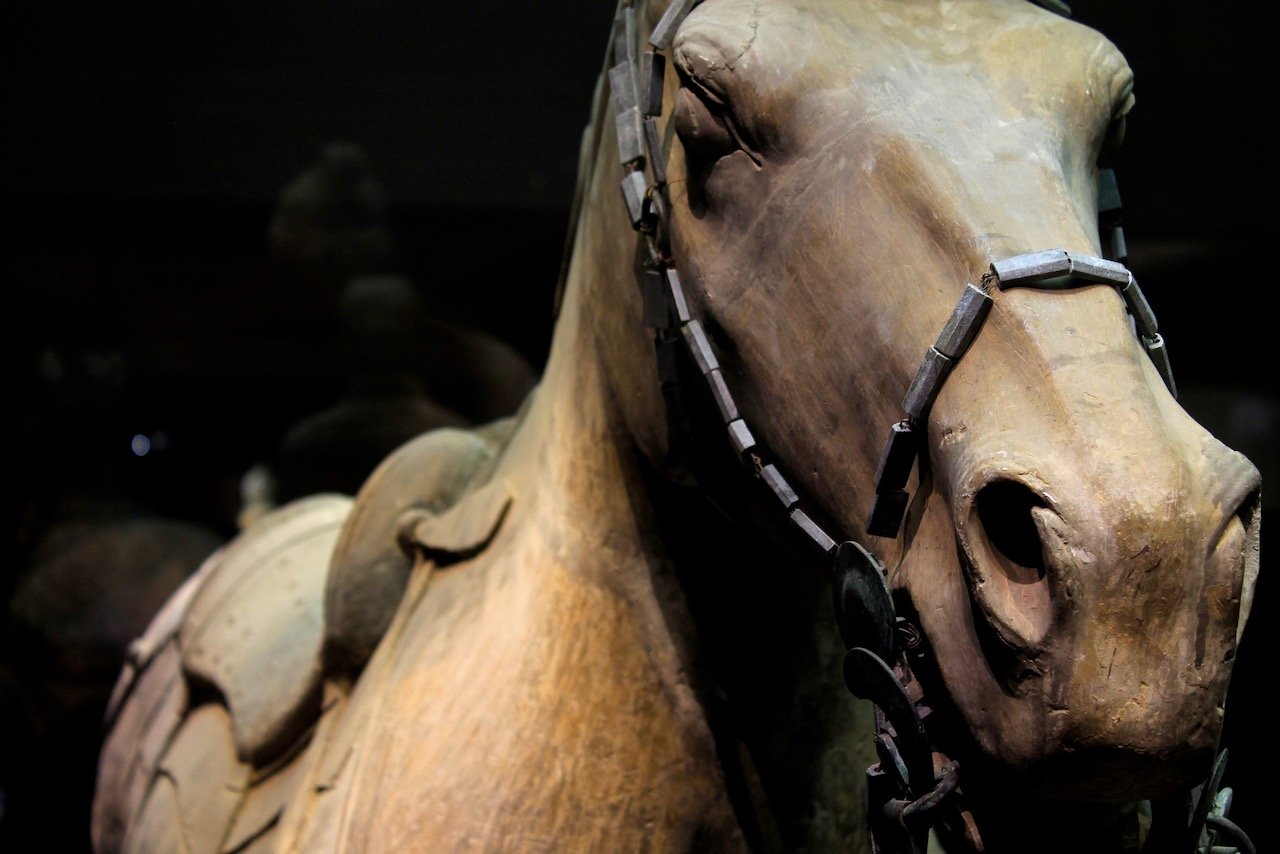
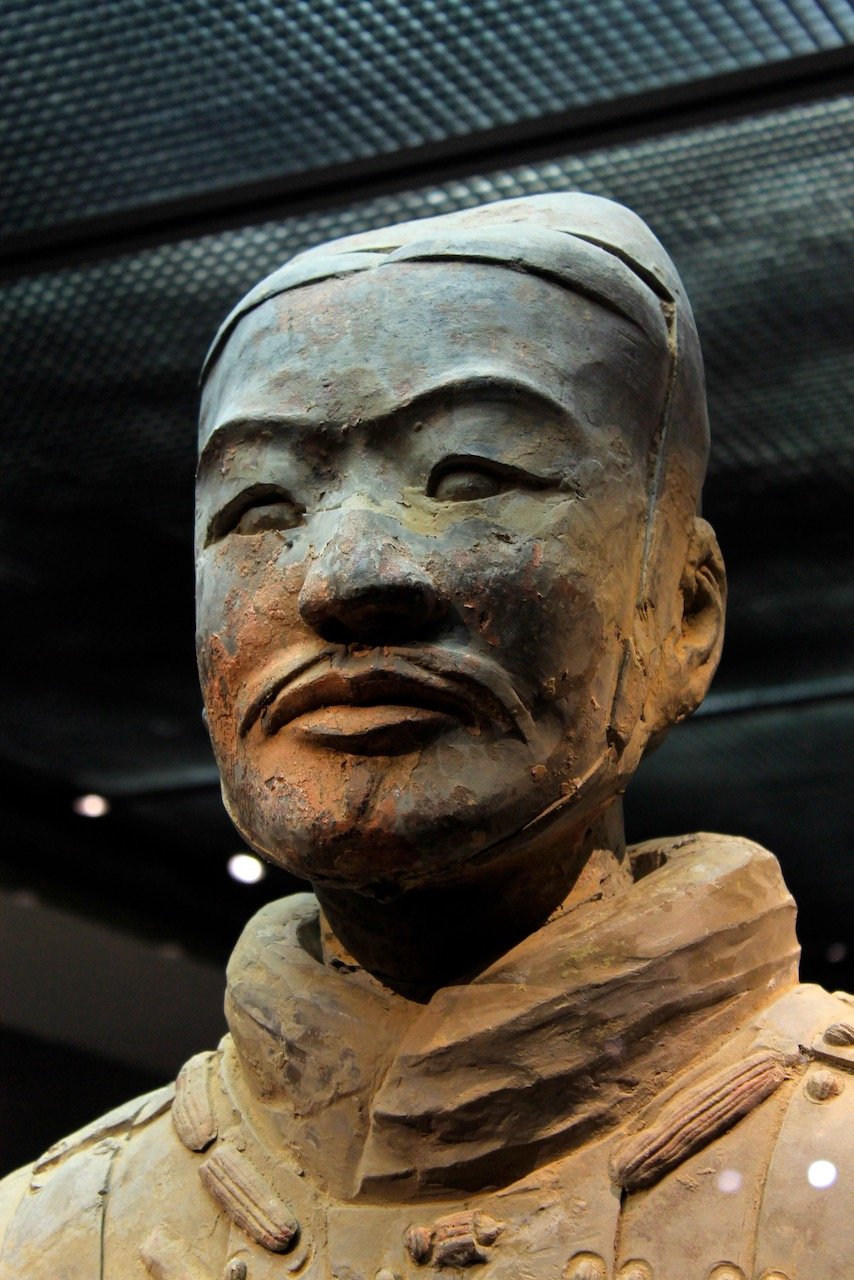
The sheer scale and magnitude of the site cannot be overstated, since the sole purpose of the arrangement was to have an army to protect the emperor in the afterlife. Getting here from Xi’an city center is as easy as taking tourism bus no. 5 from the East Square of the Xi’an Railway station and getting off at the Terracotta Warriors station. The buses leave frequently and takes anywhere from 1-1.5 hours.
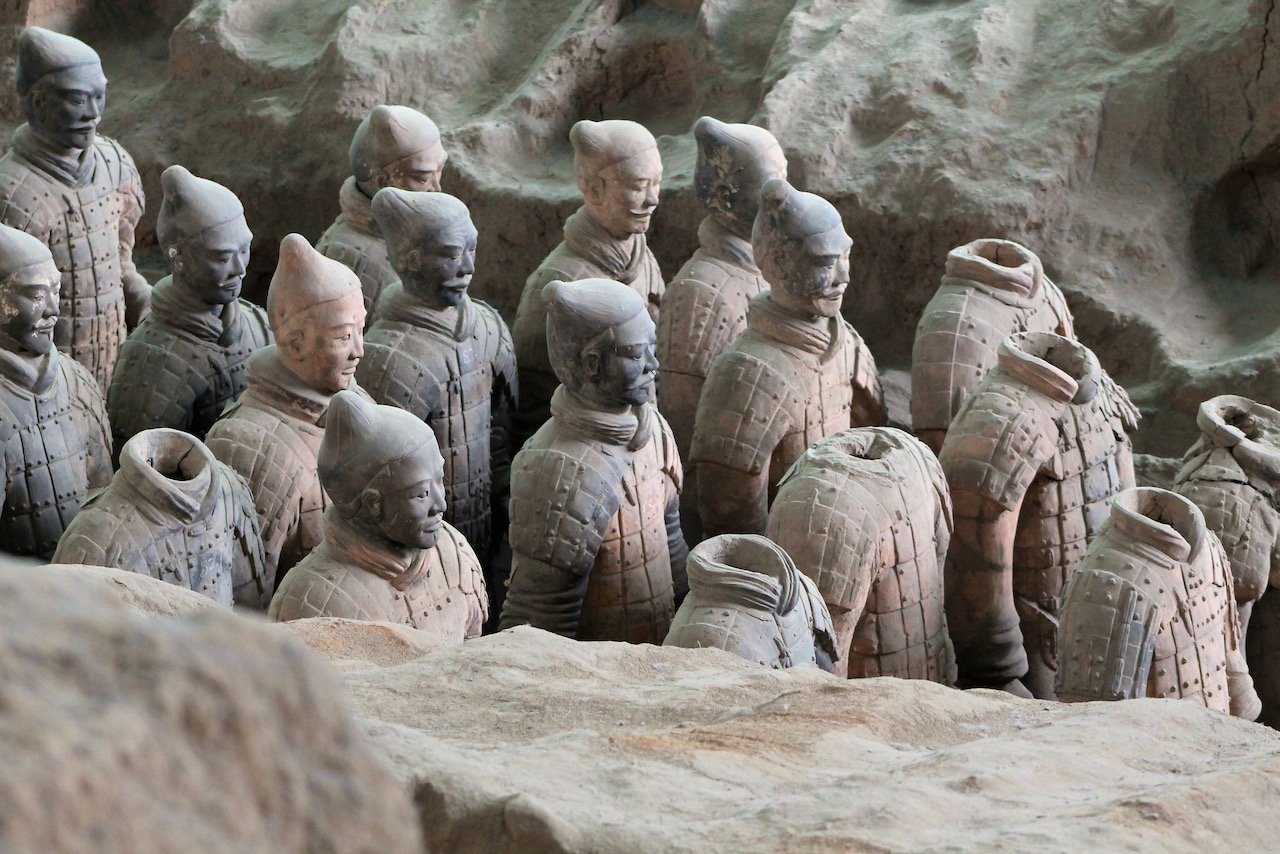

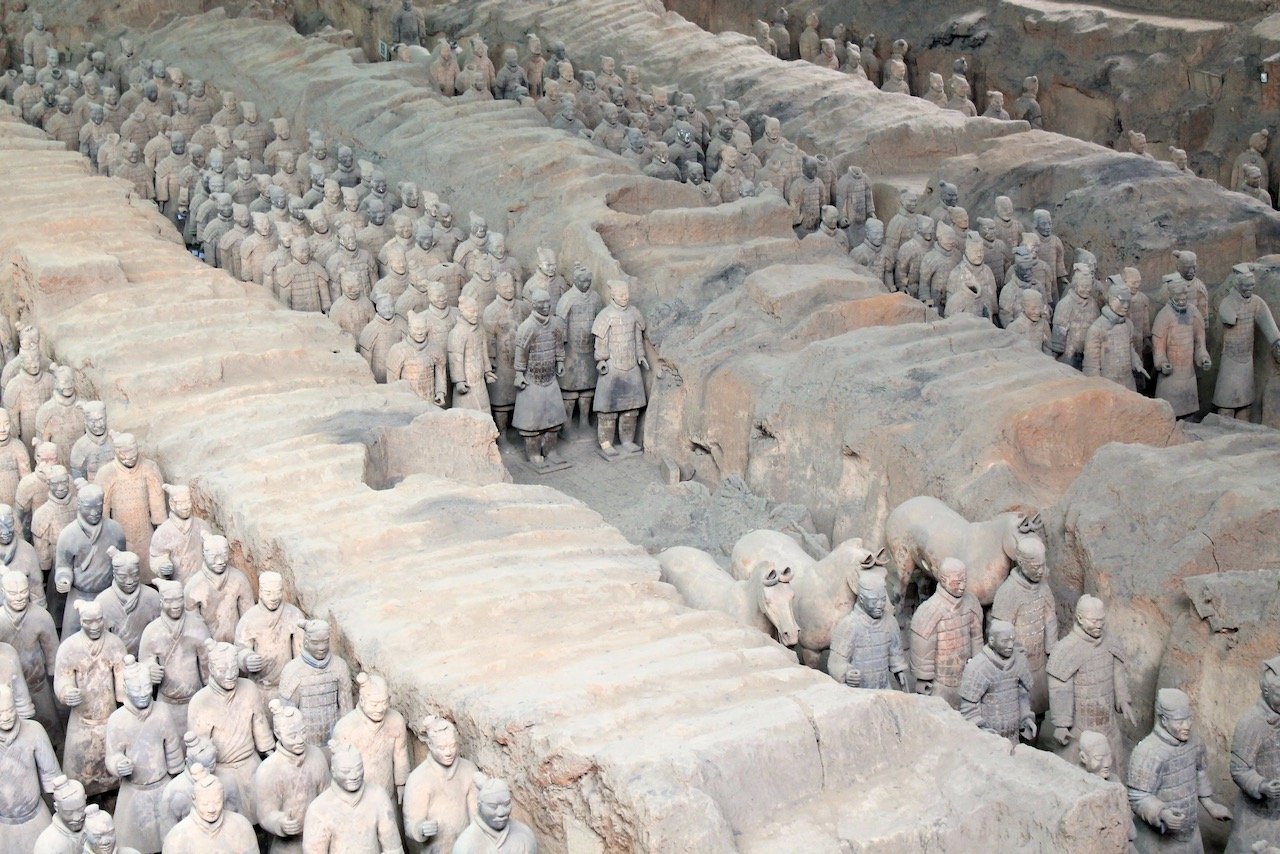
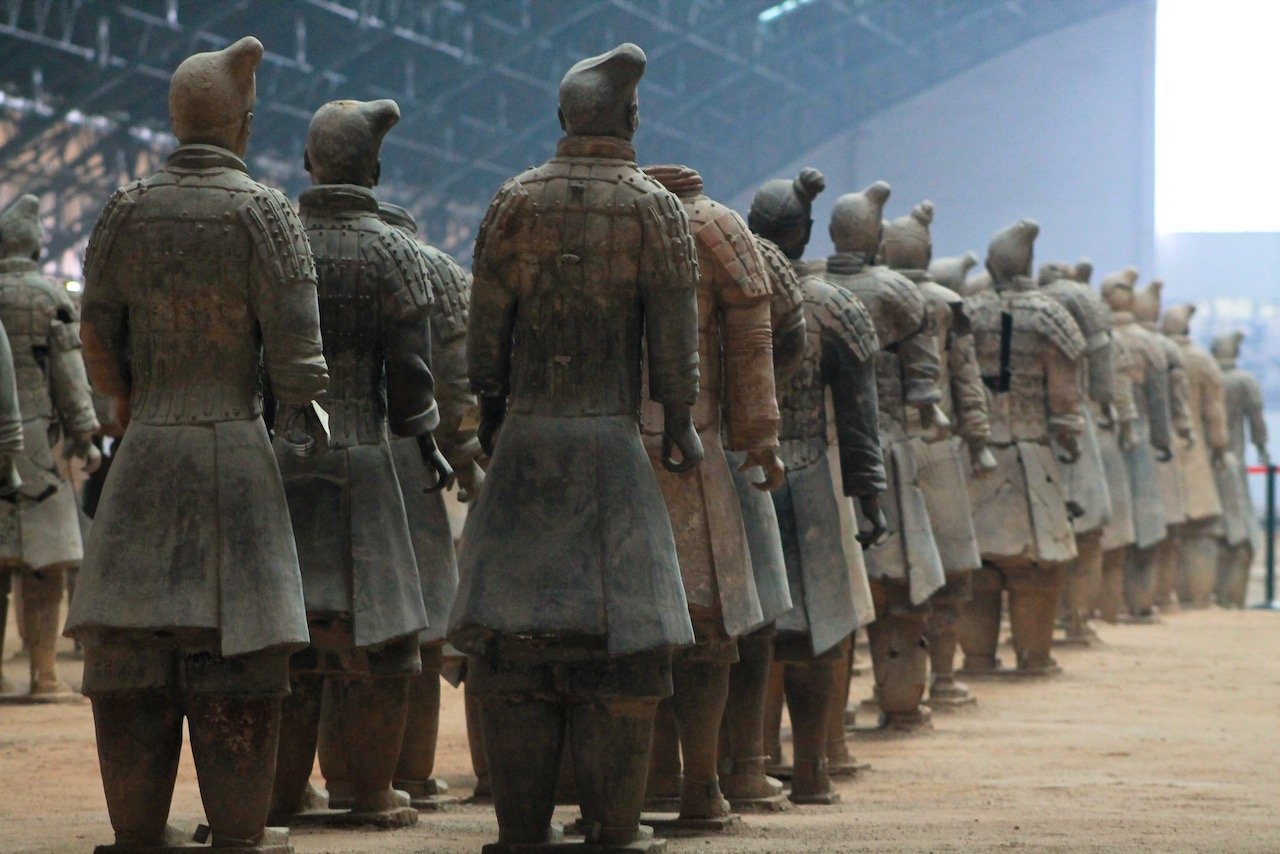
The Bell and Drum Towers in the Lianhu district are very historically significant to xi’an as well: the bell tower bell woudl be struck at dawn and the drums in teh drum tower would be struck at sunset everyday. The 7 story high buddhist Giant Wild Goose Pagoda was constructed in 704 AD (formerly 10 storey’s tall), and is a main landmark of Xi’an as well.
